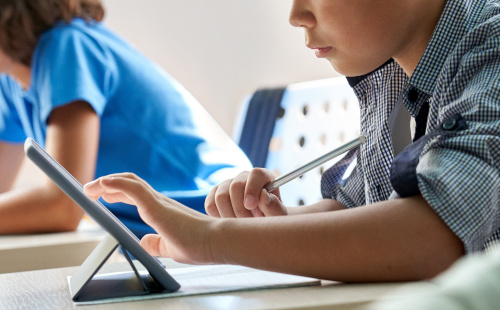This article explores the use of educational technology (Edtech) for blended and flipped learning models in modern classrooms. It discusses the benefits and challenges of these teaching models, the different types of Edtech tools available, and best practices for integrating technology into the classroom.
The use of educational technology (ed-tech) has become increasingly popular in recent years, and for good reason. With the rise of blended and flipped learning models, which combine online and in-person instruction, technology has become an essential tool for teachers and students alike. In this article, we will explore the benefits and challenges of blended and flipped learning and the ways in which Edtech can be used to enhance these teaching models.
Blended and Flipped Learning

Blended learning is a teaching model that combines online and in-person instruction. In a blended learning classroom, students typically engage in a mix of traditional classroom activities, such as lectures and discussions, as well as online activities, such as watching videos, completing assignments, and participating in online discussions.
Flipped learning is a similar model, but with the added twist of “flipping” the traditional classroom experience. In a flipped classroom, students watch lectures and complete other online activities at home and then come to class to engage in hands-on activities and discussions.
Benefits of Blended and Flipped Learning
There are many benefits to using blended and flipped learning in the classroom. For one, these models can increase student engagement and motivation by giving students more control over their learning experience.
By allowing students to work at their own pace and in their own way, blended and flipped learning can also help students develop independent learning skills. Additionally, these models can be especially beneficial for students who need extra support or accommodations, as they allow for more personalized instruction.
Challenges of Blended and Flipped Learning
While there are many benefits to blended and flipped learning, there are also some challenges to consider. One of the biggest challenges is ensuring that all students have access to the necessary technology and internet access.
Another challenge is ensuring that students stay on track and complete their online activities outside of class. Additionally, some students may struggle with the increased responsibility and independence that comes with these models.
Edtech Tools for Blended and Flipped Learning
There are a wide variety of ed-tech tools available that can be used to enhance blended and flipped learning in the classroom. One of the most popular types of tools is learning management systems (LMS), which allow teachers to create and manage online courses, track student progress, and communicate with students. Other tools, such as video conferencing software, online collaboration tools, and educational games and simulations, can also be effective in supporting blended and flipped learning.
Best Practices for Integrating Edtech into the Classroom

While Edtech can be a powerful tool for enhancing blended and flipped learning, it is important to use it effectively. Here are some best practices for integrating Edtech into the classroom:
- Start small and build up: Begin by incorporating one or two Edtech tools into your classroom, and gradually build up as you and your students become more comfortable with the technology.
- Set clear expectations: Make sure students understand what is expected of them in terms of online activities, and provide support and guidance as needed.
- Foster a sense of community: Use technology to foster a sense of community and collaboration among your students, even when they are not physically in the same room.
- Provide regular feedback: Use technology to provide regular feedback to your students, both on their online activities and their in-person work.
- Stay up-to-date: Edtech is constantly evolving, so make sure you stay up-to-date on the latest tools and trends.
Conclusion:
In conclusion, the use of Edtech in blended and flipped learning models can be an effective way to enhance student learning and engagement in the classroom. By leveraging technology, teachers can create a more personalized learning experience for their students and help them develop important skills such as independent learning and collaboration.
However, it is important to consider the challenges and ensure that all students have equal access to technology and support. By following best practices for integrating Edtech into the classroom, teachers can effectively use technology to enhance their teaching and provide their students with the best possible learning experience.
In today’s world, where technology is rapidly advancing and changing the way we live and work, it is crucial that we prepare our students for the digital age. By incorporating Edtech into blended and flipped learning models, we can help students develop the skills they need to succeed in the 21st century.
Whether it is through online courses, video conferencing, or educational games and simulations, there are many ways that Edtech can be used to enhance student learning and engagement in the classroom.
Furthermore, Edtech can also help teachers better track and analyze student progress, making it easier to identify areas where students may be struggling and provide targeted support. With learning management systems and other tools, teachers can easily track student performance, identify patterns, and adjust their teaching accordingly.
In conclusion, the use of Edtech in blended and flipped learning models has the potential to transform the way we teach and learn in the classroom.
By leveraging technology to create a more personalized, collaborative, and engaging learning experience, teachers can help their students develop the skills they need to succeed in the digital age.
By staying up-to-date on the latest tools and trends, and following best practices for integrating technology into the classroom, teachers can ensure that they are providing their students with the best possible learning experience.









